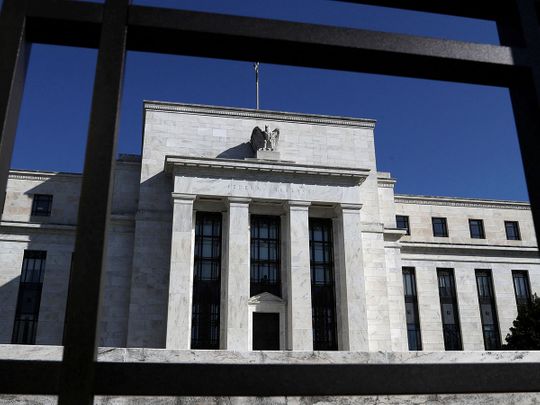
Losses loom for Asia’s stock market on Monday as investors absorb Federal Reserve Chair Jerome Powell’s stern message that interest rates are going higher for longer in a painful fight against inflation.
Futures shed almost 2 per cent for Japan and 1.5 per cent for Australia after a 3.4 per cent plunge in the S&P 500 index. The slide was sparked by Powell’s rebuttal of the notion that the trajectory of monetary tightening could soon be tempered.
Friday’s US slump further shriveled a global bounce in shares from June bear-market lows that was predicated partly on bets of a Fed shift to rate cuts next year as growth slows. Powell spelled out the need for sustained restrictive policy, comments that lifted the US two-year Treasury yield toward 2022’s high and sent investors scurrying to the dollar as a shelter from volatility.
The greenback’s strength could be an impediment for Asia’s markets on Monday. Investor angst was evident over the weekend as Bitcoin flirted with a sustained break below $20,000, a sign of fizzling risk appetite.
Powell was “really hawkish” at Jackson Hole, said Manish Bhargava, a Straits Investment Holdings fund manager in Singapore. There’ll be a “lot of red on Monday” in a fizzling summer rally as money exits emerging markets, he said.
Powell’s comments are a further boost for the dollar, Westpac Banking Corp. and Bank of Singapore analysts said. The latter’s chief economist Mansoor Mohiuddin said that’s both as a safe haven and higher-yielding carry trade versus lower yielding Group-of-10 currencies like the euro, pound and yen.
“USD/JPY is the most obvious way to play for an increasingly determined Fed, with 140 likely to give way before the September FOMC meeting,” said Sean Callow, Westpac’s senior currency strategist.
The dollar is up over 10 per cent this year while the yen’s 16 per cent retreat leaves it at the bottom of the G-10, a schism reflecting the Bank of Japan’s continuing easy-money stance that Governor Haruhiko Kuroda reaffirmed at Jackson Hole.
Borrowing costs
But the prevailing message from the symposium was that borrowing costs are going up from the US to Europe to Asia. Officials are combating some of the highest inflation in a generation, stoked by damage to supply chains for energy and components due to Russia’s war in Ukraine and Covid curbs in China.
“Restoring price stability will likely require maintaining a restrictive policy stance for some time,” Powell told the audience at the Fed’s annual retreat. “The historical record cautions strongly against prematurely loosening policy.”
Investors now see the Fed’s policy rate peaking in March at around 3.80 per cent and pared bets on a decline in 2023. The US yield curve between the five and 30-year maturities inverted for the second time this month, while the gap between the higher two-year yield and the 10-year rate widened.
The inversions suggest the bond market anticipates a recession is the necessary sacrifice to get price pressures back under control.










